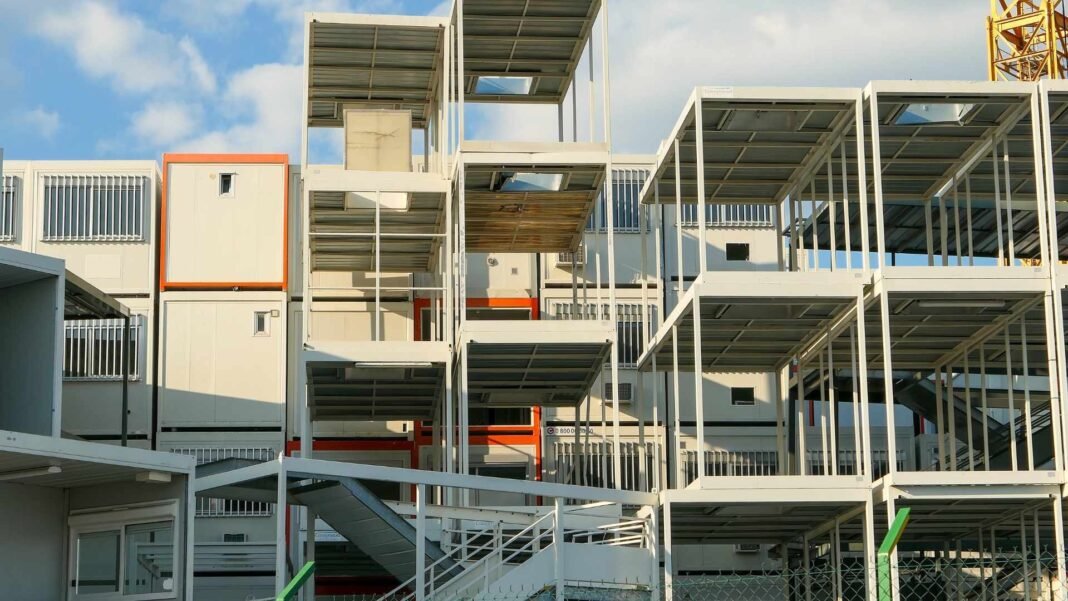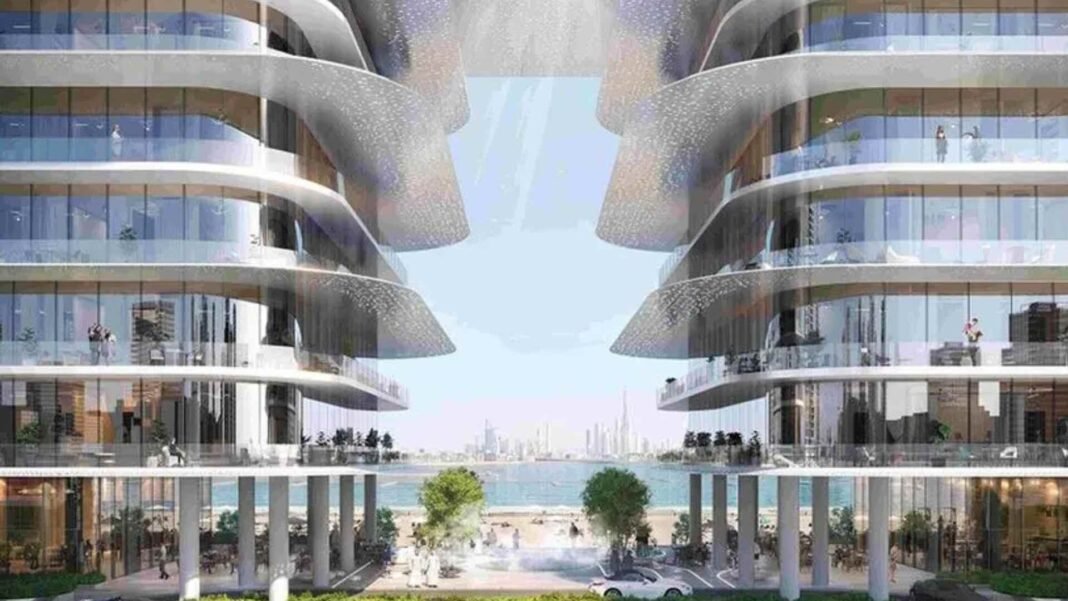The construction industry is undergoing a transformation, with modular construction and off-site manufacturing leading the charge. This innovative approach involves building components in a factory before assembling them on-site, offering a faster, more sustainable alternative to traditional methods. As urbanization accelerates and environmental concerns grow, modular construction is emerging as a solution to meet the demand for efficient, eco-friendly buildings. In 2025, the industry is experiencing significant growth, driven by technological advancements and market needs.
Understanding Modular Construction
Modular construction is a process where building components, known as modules, are prefabricated in a controlled factory environment. These modules, which can include entire rooms or structural sections, are then transported to the construction site and assembled into a complete building. This method differs from traditional construction, where most work occurs on-site, often facing delays due to weather or labor shortages. Modular construction offers several advantages:
- Controlled Environment: Factories ensure consistent quality, reducing errors and material waste.
- Parallel Workflows: Off-site manufacturing and on-site preparation happen simultaneously, speeding up timelines.
- Versatility: It suits various projects, from single-family homes to large commercial complexes.
This approach is gaining traction as it addresses modern challenges like housing shortages and environmental sustainability.
Key Trends in Modular Construction for 2025
The modular construction industry is evolving rapidly, with several trends shaping its trajectory in 2025. According to Trident Modular, the following developments are driving innovation:
- Sustainability and Eco-Friendly Materials
- Builders are increasingly using recycled steel, reclaimed wood, and low-VOC materials to reduce environmental impact.
- Energy-efficient modules incorporate solar panels, green roofs, and high-performance insulation.
- Integration of Smart Technologies
- Smart modules feature sensors for energy management, security, and maintenance alerts.
- Building Information Modeling (BIM) enhances collaboration with 3D modeling and real-time data sharing.
- Expansion into New Sectors
- Healthcare is adopting modular construction for rapid deployment of clinics and hospitals.
- Education and hospitality sectors are using modular solutions for classrooms and prefabricated hotels.
- Focus on Customization and Aesthetics
- Custom designs cater to unique brand identities, with high-end finishes for interiors and exteriors.
- Modular buildings now meet aesthetic and luxury demands, moving beyond purely functional designs.
- Accelerated Construction Timelines
- Optimized off-site fabrication and on-site preparation reduce project durations.
- Just-in-time delivery systems ensure precise scheduling, minimizing delays.
- Global Collaboration and Standardization
- International partnerships facilitate design and material sourcing across borders.
- Universal building codes streamline approvals and ensure consistency.
- Advancements in Modular High-Rises
- Modular skyscrapers and multi-story structures are becoming feasible with materials like cross-laminated timber (CLT).
- These innovations enable taller, more complex modular projects.
- Improved Supply Chain Management
- Digital supply chains allow real-time tracking of materials and components.
- Local sourcing reduces transportation costs and carbon footprints.
These trends reflect the industry’s shift toward sustainability, efficiency, and innovation, positioning modular construction as a leader in modern building practices.
Market Growth and Regional Analysis
The modular construction market is experiencing robust growth, driven by demand for affordable housing and sustainable solutions. According to Precedence Research, the global market was valued at USD 104.65 billion in 2024 and is projected to reach USD 214.76 billion by 2034, with a compound annual growth rate (CAGR) of 7.45%. Grand View Research offers a slightly different estimate, valuing the market at USD 103.55 billion in 2024 and projecting USD 162.42 billion by 2030, with a CAGR of 7.9%. Both reports confirm the industry’s strong growth trajectory.
| Region | Market Share (2024) | CAGR (2025-2030/2034) | Key Drivers |
| Europe | 42% (Precedence) / 46.19% (Grand View) | 8% / 7.9% | High adoption in Germany, Finland, UK, Sweden; housing shortages, migrant influx |
| Asia Pacific | Fastest-growing | 8.33% / 8.7% | Urbanization, infrastructure development in China, Singapore |
| North America | 14.4% (Grand View) | Not specified | Growth in education, healthcare, multifamily projects |
Europe leads the market, driven by countries like the UK, where government initiatives aim to build 300,000 new homes annually. Asia Pacific is the fastest-growing region, fueled by rapid urbanization in China and Singapore. North America is seeing increased adoption in education and healthcare, with the US market valued at USD 10.53 billion in 2022. These regional dynamics highlight modular construction’s global appeal.
Benefits of Modular Construction
Modular construction offers compelling advantages over traditional methods, making it a preferred choice for many projects:
- Faster Construction Times: Off-site manufacturing can reduce project timelines by up to 50%, as site preparation and module production occur simultaneously.
- Cost Savings: Projects can save up to 20% on total costs due to reduced labor, waste, and delays.
- Sustainability: Factory settings minimize waste and carbon emissions. The Smith’s Garden project in Birmingham achieved a 35% reduction in embodied carbon.
- Improved Quality and Safety: Controlled environments ensure higher precision and safer working conditions.
- Community Benefits: Reduced on-site activity lowers traffic congestion and pollution, improving local air quality.
These benefits make modular construction an attractive solution for addressing modern construction challenges.
Case Study: Smith’s Garden, Birmingham, UK
The Smith’s Garden project in Birmingham, UK, exemplifies modular construction’s potential. Completed in early 2025, this large-scale build-to-rent project involved manufacturing 1,143 modules in Telford, UK, and assembling them on a four-acre site. The development includes six buildings, ranging from three to 26 storeys, housing approximately 550 flats and apartments, from studios to four-bedroom townhouses.
Key highlights include:
- Sustainability: The project achieved a 50% reduction in operational carbon and a 30% reduction in embodied carbon compared to traditional methods.
- Efficiency: Manufacturing occurred from November 2023 to January 2025, with assembly completed by June 2025.
- Scale: As one of the UK’s largest modular projects, it demonstrates the feasibility of high-density modular construction.
Managed by Elements Europe, a subsidiary of GS E&C, and funded by Macquarie Asset Management, Smith’s Garden showcases how modular construction can deliver sustainable, high-quality housing at scale.
Future Outlook
The future of modular construction looks promising, with the market expected to exceed USD 162 billion by 2030. Innovations like 3D printing and advanced robotics will further enhance manufacturing precision and speed. The focus on circularity—designing buildings for disassembly and reuse—will make modular construction even more sustainable. As urbanization and housing demands grow, modular construction will likely play a central role in creating efficient, eco-friendly buildings worldwide.
Modular construction and off-site manufacturing are reshaping the construction industry, offering faster, more sustainable, and cost-effective solutions. With trends like eco-friendly materials, smart technologies, and global collaboration driving growth, the industry is poised for significant expansion. Projects like Smith’s Garden in Birmingham demonstrate the real-world impact of modular construction in addressing housing needs while reducing environmental impact. Though challenges remain, the benefits of speed, cost savings, and sustainability make modular construction a cornerstone of the future built environment. As the industry continues to innovate, it will redefine how we build for a more sustainable world.






